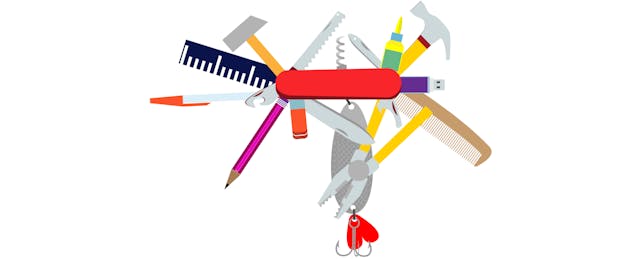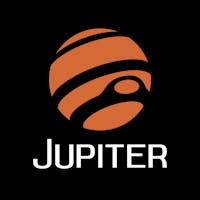When it comes to education technology, most educators would agree on two primary premises: Our needs are many, and we’re not short on tools to meet those needs. Therefore, the collective challenge may be to find the tools that offer the broadest array of options and the simplest integration.
With Jupiter, founder David Hundsness aims to provide the most comprehensive and user-friendly learning management system (LMS) and student information system (SIS) possible.
A former middle school teacher whose need for a better gradebook solution ultimately led him to found his own company, Hundsness and his team have spent the past 17 years evolving and developing Jupiter’s integrated systems to make the work of educators more seamless. Recently, he took some time out to discuss Jupiter’s unique advantages with EdSurge.
EdSurge: In the vast sea of edtech products, what makes Jupiter stand out?
Hundsness: Jupiter is truly integrated, built in-house from the ground up as one application, rather than different applications acquired and stitched together. We can meet schools where they are—as their LMS, SIS or both. We also provide features such as online registration, online payments and school communications. For many schools, there are often different applications for each of these needs. Jupiter is a complete package that is also extremely user-friendly.
Jupiter started as a gradebook that became an LMS and SIS. Our gradebook, in particular, has evolved with input from teachers over the years. And it’s all customizable—we’re all about the options. For example, to do standards-based grading, most applications will require teachers to switch screens. Ours is blended, seamless and truly embedded. We even offer summative grading if one would rather report the student’s current mastery instead of their average over the term.
We are in the middle of a huge shift on how grades are used. But Jupiter is ready to support anyone and everyone, no matter where they are on this grading journey.
How does the platform handle communications?
Messaging and email—the second most popular features after grading—have evolved way beyond the legacy email systems, now more like discussion forums and social media. Students and parents can choose how they want to receive messages, as email or text or just online.
This is all integrated. Schools and districts don’t have to use other third-party platforms for communication. We have lots of filters and shortcuts to allow users to customize their experience. Our schools get a very high adoption rate from their stakeholders with our communication tools. And everyone is operating in the same space for all of their needs.
We know that educator-driven design matters in edtech. How do you prioritize educators in your product development?
The challenge all software designers face is understanding what underlying problem the educator is trying to solve. Instead of just taking feedback at face value, we ask follow-up questions to truly understand the underlying need, then design a solution and get more feedback. It’s an iterative process, part art and part science. Obviously, I had some advantages as a teacher when I first started designing a gradebook.
We sometimes get mixed feedback from educators, so we look for where they overlap. Often, people want what they are already familiar with as well. Edtech designers have to look more long term. We have to decide which improvements will benefit most schools and users.
As schools adopt more edtech, it has left teachers having to learn more apps. Each app by itself might not be a big deal, but teachers can feel overwhelmed. That’s why the evolution is to integrate, have single sign-on and make these things seamless. We have the ability to make teachers’ lives easier and less stressful this way. If we did not evolve, teachers, students and parents would be spending more time learning apps vs. actually learning content or communicating. Ultimately, we can make all these things easier and way more efficient. It’s about improving people’s lives and their productivity.
Learn why Jupiter’s integrated solutions are loved by teachers, students and parents alike.
What makes an edtech product easy to adopt?
First and foremost, it has to be web-based. That is universal now, but that was not the case when we started. Fortunately, we were ahead of the curve.
Secondly, it’s about integration. Schools prefer as few systems as possible, but they also have to balance that with which apps are best for which users. For example, the app that’s best for the school nurse might not be best for the teachers. That’s when schools choose best-in-class, and we make that integration possible.
My personal obsession is ease of use. Some systems require a lot of training, but many users figure out Jupiter without training. That is a testament to the design. Once you know how to navigate one part of our system, you can navigate the rest of it. Our all-in-one approach makes it easier to use.
We continually ask ourselves how a teacher can do a common task with fewer steps. The more clicks and screens required, the more time it takes, and the more learning suffers. We use data to study the number of clicks for particular tasks. We work to make those fewer and the work easier. We pride ourselves on our ease of use, efficiency and being intuitive for the user.
Of course, we offer everyone a free trial. Sometimes, we find schools who try to make a decision based only on the sales presentations, but that can give a false sense of how easy it is. We always recommend they take all systems out for a test drive to see firsthand how intuitive they are. That’s where they truly appreciate the difference Jupiter offers.
What’s on the horizon for Jupiter?
Naturally, we will keep evolving. We just recently launched improvements for automatic scheduling in the SIS. We are actually hitting feature completeness. We have incorporated many spaces in this arena that were traditionally different apps: SIS, LMS, gradebook, online registration/enrollment, online payments, communication and feedback, test analytics and even being able to annotate PDFs. Now, we’re trying to raise awareness so more schools know about our powerful, integrated and intuitive system.



